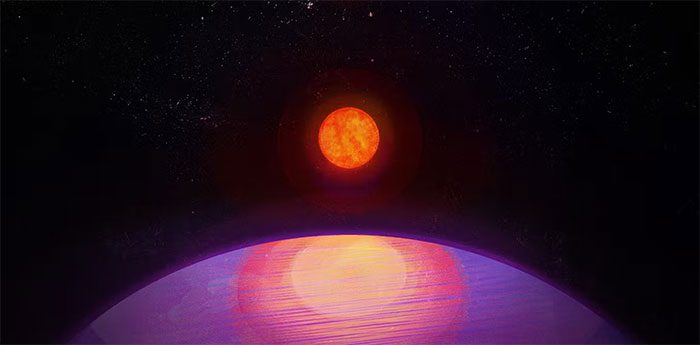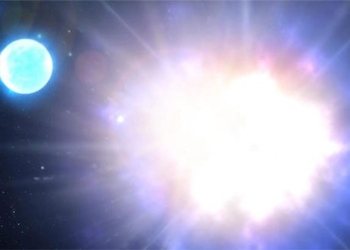This planet, weighing 13 times that of Earth and comparable to Neptune, has been discovered orbiting a super-cold M-dwarf star named LHS 3154, which is 9 times lighter than our Sun. M-dwarfs are the smallest and coldest type of star in the universe.
The planet is called LHS 3154b and it takes approximately 3.7 Earth days to complete one orbit around its host star. This makes it the heaviest known planet orbiting the coldest and least massive star in the universe, according to a study published in the journal Science on November 30. This discovery also challenges scientists’ understanding of how planetary systems form.

The planet orbits this star 51 light years away from the Sun. (Illustration: Pennsylvania State University).
“This discovery truly shows how little we know about the universe,” said co-author of the study, Suvrath Mahadevan. He remarked: “We did not think a planet as massive as this could exist around such a low-mass star.”
Stars form from large clouds of gas and dust, as well as leftover material that creates a disk around the star—where planets subsequently form. The amount of material present in these disks around stars determines how massive the planets can be. The material in the disk primarily depends on the mass of the star.
For instance, small M-dwarf stars are the most common objects in the Milky Way, and they have small rocky planets orbiting them instead of giant gas planets.
“The planet-forming disk around the low-mass star LHS 3154 is believed to lack sufficient solid mass to create this planet. Yet it exists out there, so we need to rethink our understanding of how planets and stars form,” Mahadevan commented.
The planet orbits this star, located 51 light years from the Sun, and was discovered using the Habitable Zone Planet Finder (HPF), installed on the Hobby-Eberly Telescope at the McDonald Observatory in Texas.
A team of scientists, led by Mahadevan, developed the HPF, designed to detect planets orbiting in the habitable zones of cold, small stars. The habitable zone is the right distance from the host star where a planet is warm enough for liquid water to exist on its surface and has the potential to support life.
The lower surface temperatures of small stars mean that planets can orbit them more closely while still maintaining volatile elements like water on their surfaces. As planets orbit their stars, the gravitational pull between the two entities can create noticeable fluctuations that the HPF detects in infrared light.
“Imagine this star as a campfire. The cooler the fire, the closer you can get to it to stay warm. The same is true for planets. If stars are cooler, planets need to orbit closer to their star if they want to be warm enough for water to exist in liquid form. If a planet has an orbit close enough to its super-cold star, we can detect it by observing very small changes in the star’s spectral color or light as it is tugged by an orbiting planet,” Mahadevan explained.
Based on modeling and analysis, the research team believes that this planet has a heavy core that requires more material in the planet-forming disk than what is currently available around the host star, co-author of the study Megan Delamer stated.
The researchers estimate that the dust in the material disk would need to be at least ten times greater than what is found in disks around low-mass stars.
“Current planet formation theories struggle to explain what we observe. Based on the current research with HPF and other tools, an object like the one we have discovered is extremely rare, so finding it is indeed exciting.”
Some large-mass planets have been discovered orbiting low-mass stars, such as GJ 3512 b, which was discovered in 2019, but its orbit is longer and the planets do not orbit too closely to the host star.





















































